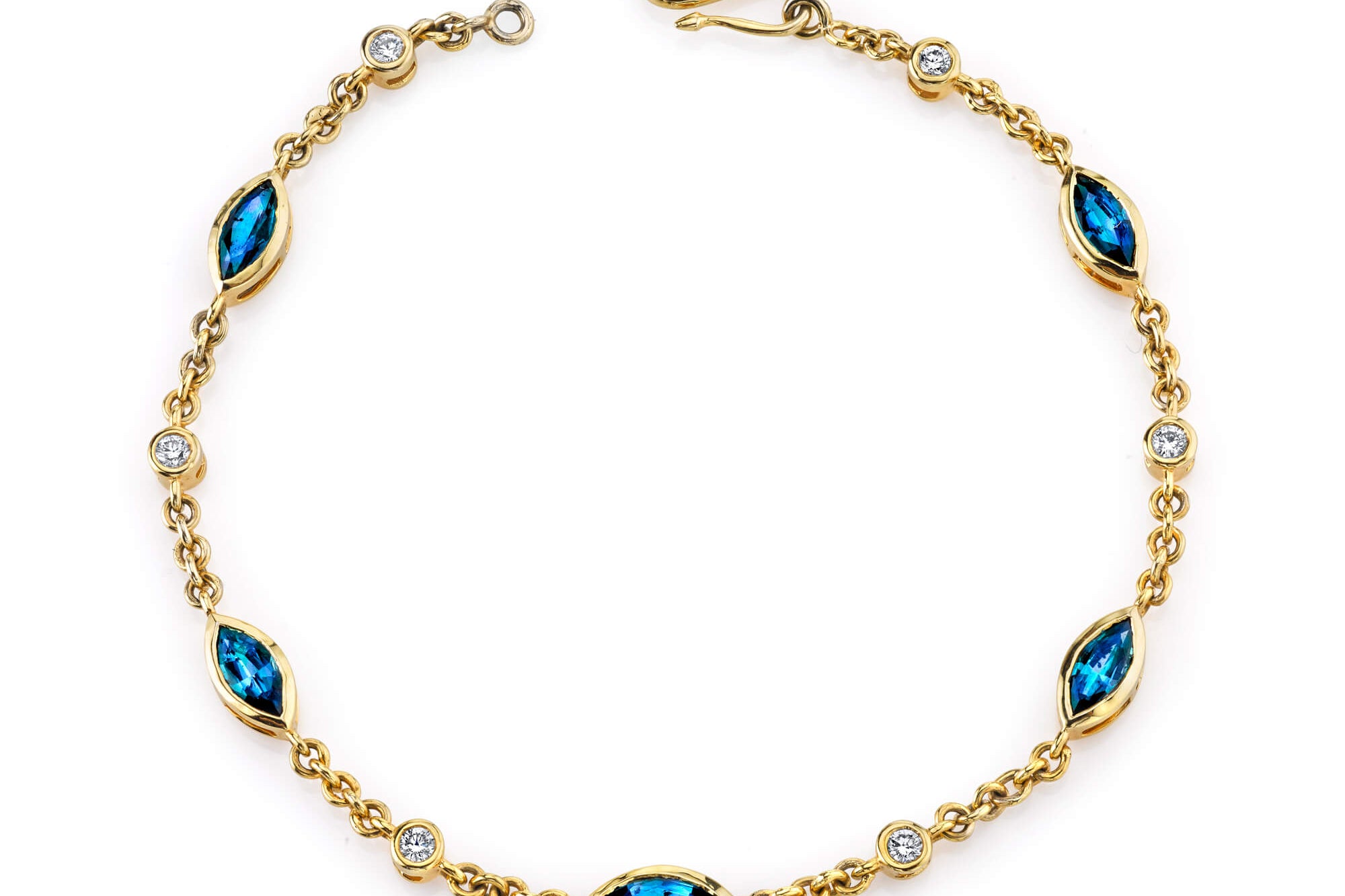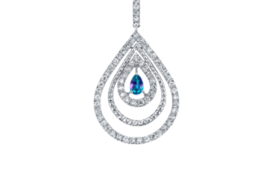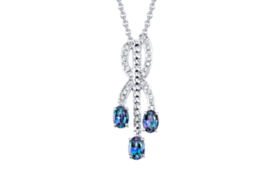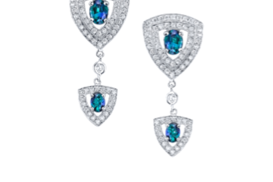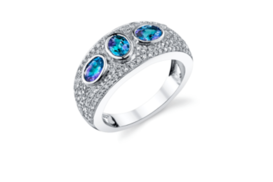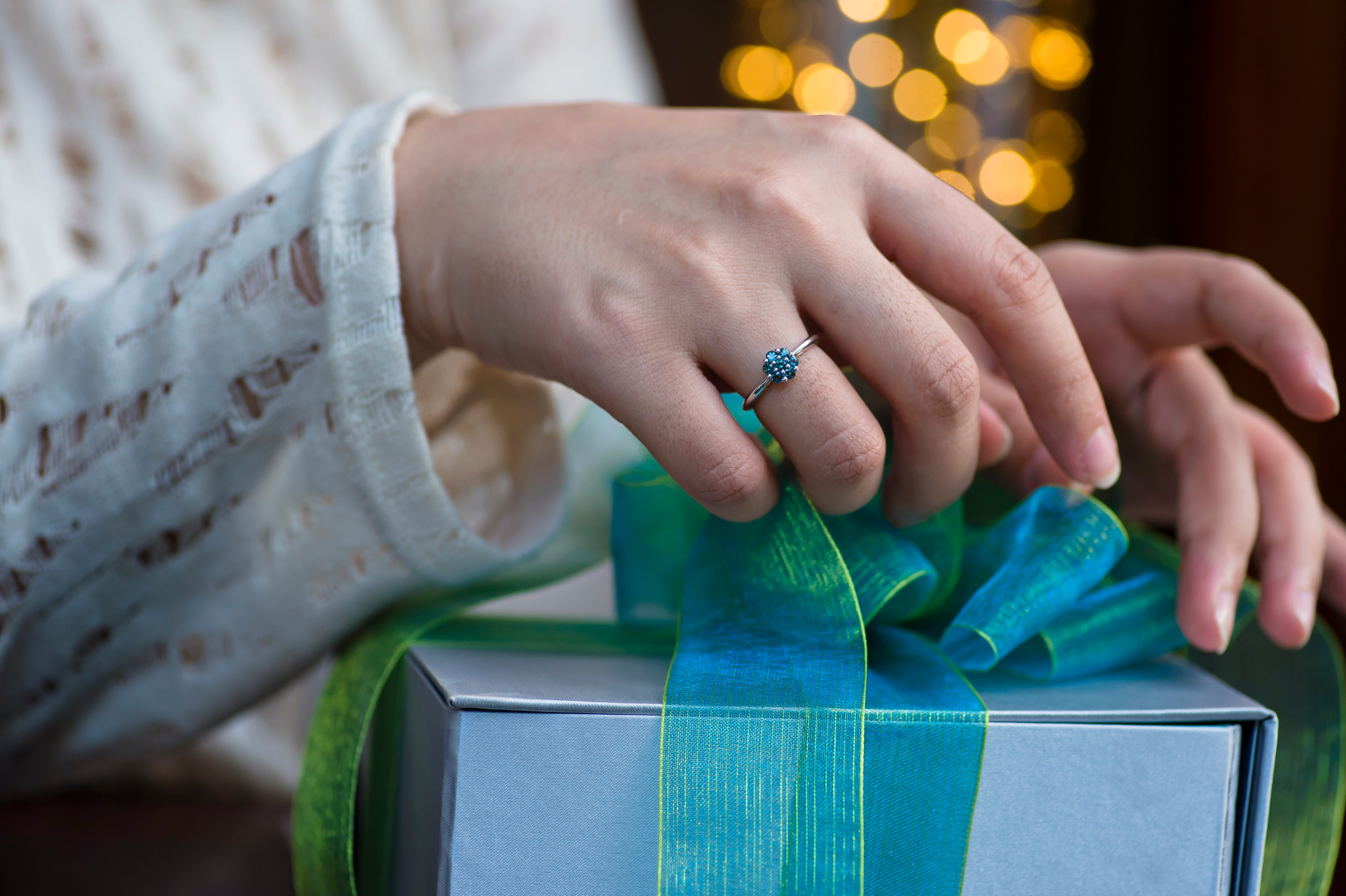The History of Wearing Birthstones

Why is an Alexandrite June birthstone special?
Being a particular member of the chrysoberyl family, it's because it absorbs more of the red spectrum under artificial light than in daylight because of the Chromium it contains. It's this absorption that turns it from a rich bluish green to a plum purple. An ability that's very rare in gemstones.
So it will glow with a rich bluish green during the day, and when evening falls, and it's under romantic candlelight, it immediately transforms into a plum purple. Which is more than can be said for Pearls and Moonstone, the alternative June Birthstones.
Watch the remarkable color change of the June birthstone, Alexandrite.
Why are there three birthstones for June?
There are three types of birthstone. Ancient, traditional and modern. The ancient ones include diamonds and sapphires whilst the traditional ones cover garnets and lapis amongst others. And the modern ones, like Alexandrite, were created as so many new gems were discovered in the 18th to 20th centuries that in 1912 it was decided by the National Association of Jewelers to create a more up to date list which has remained unchanged for over 100 years. The 3 modern June birthstones are Alexandrite, Pearls and Moonstone.
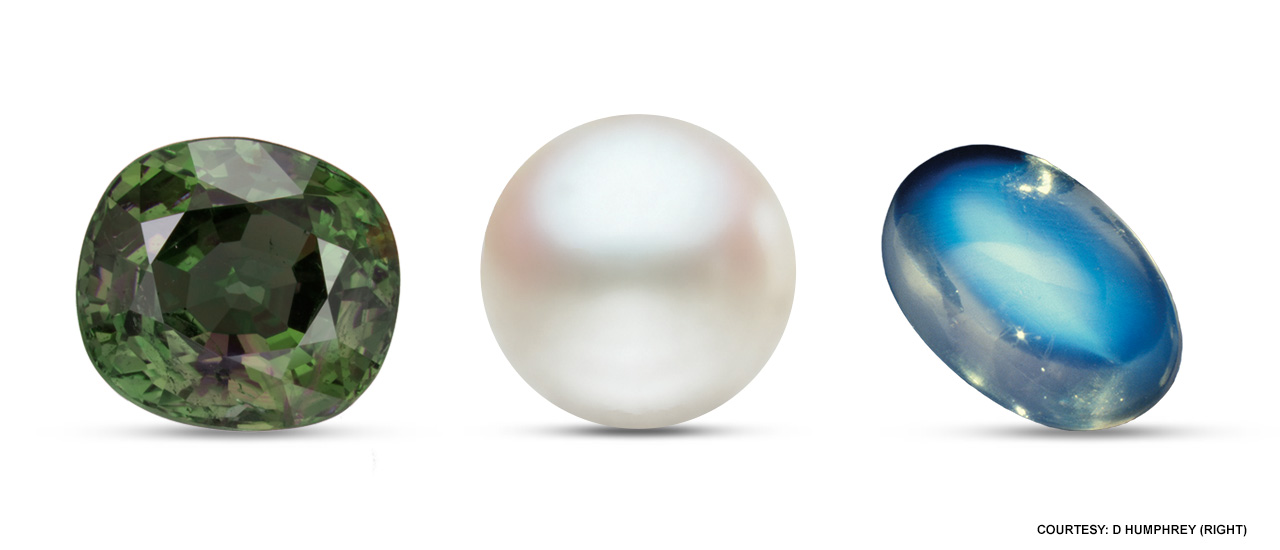
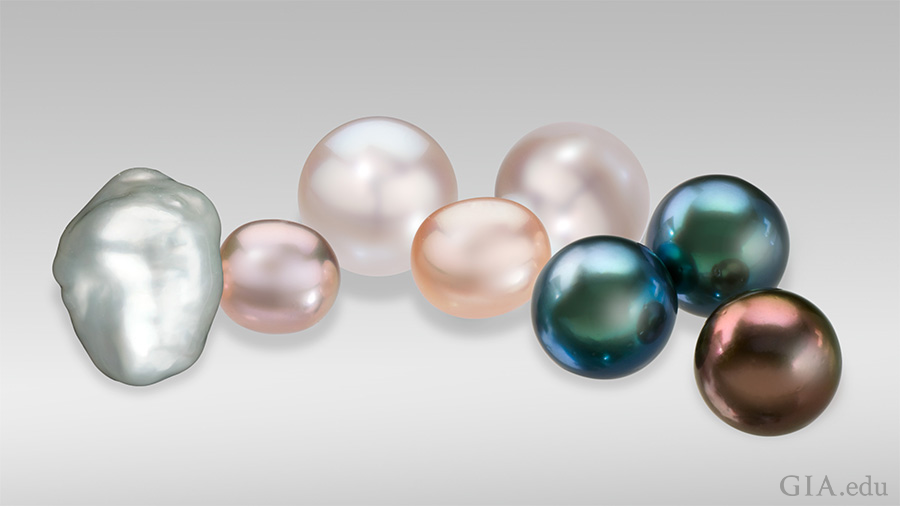
Ultimately, they do require a particular wardrobe style to be shown at their best and may not be suited to today's fashions. Moonstones, on the other hand, are a naturally occurring semi-precious stone. In Indian mythology, they were thought to be captured moonbeams and indeed their milky opalescence does appear to embody that name.
 Moonstones - June Birthstone (image-credits:gia.com)
Moonstones - June Birthstone (image-credits:gia.com)
They achieved their highest prominence in the swinging sixties when designers incorporated them into their 'Hippy' designs and again in the '90's in 'New Age' collections. Today, they're mined in many tropical countries and set in locally designed jewelry.
The source of Alexandrite
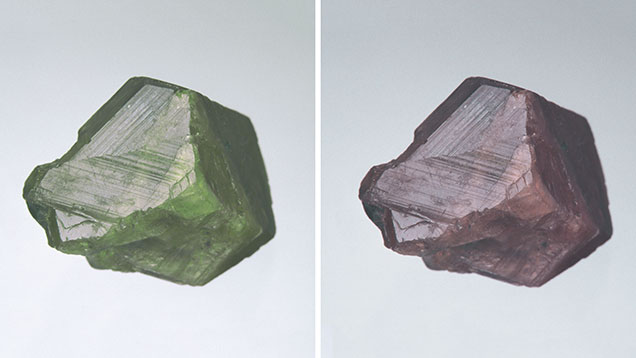 An alexandrite gemstone showing its color change in the rough (image-credits:gia.com)
An alexandrite gemstone showing its color change in the rough (image-credits:gia.com)
Alexandrite was only discovered in Russia's Ural Mountains by Sapphire miners in 1830 and was quickly added to the list because of its strong color change ability. Alexandrite was named after the young Tsar-in-waiting, Alexander II, who came of age that year, but it also referenced the national colors of red and green of the Russian army.

For a long time, Russia was the only source of this magnificent gem and it was jealously guarded by the aristocracy. It was actually held to be the National Gem of Russia for a while. But all good things came to an end as the seams were exhausted and it wasn't until 1985 that an even richer source of Alexandrite was discovered in the central plateau of Brazil at the Hematita mine. It's from this mine (and ONLY this mine) that only the best Alexandrite is sourced before they are transformed by skilled craftsmen into eye popping jewelry pieces to adorn those born in June.
Why only Brazil?
The reason is simple. These gems are as near perfect as it's possible to get. Buying a newly mined gem is truly an art and buyers spend literally days appraising each candidate gem before buying.


The Hematita mine in Minas Gerais is the only known deposit of Alexandrites in Brazil.

Alexandrite's unseen benefits
Since its discovery, the gemstone has been thought to bring luck, good fortune and love. Which it would as it's also said to encourage romance. In Russia it is considered to be a good omen gem. It is also said to strengthen intuition, creativity, and imagination.
It is also thought that through the stone, joy enters the lives of people with too much self-discipline. With its changing color, it is a reminder that life is not always what it seems. Of course, it brings joy because who wouldn't be joyful at receiving a gift of an exquisite piece of Alexandrite jewelry! Contemporary practitioners of crystal healing claim Alexandrite is helpful in treating certain physical ailments although there appears to be no actual proof.
So how can an Alexandrite June birthstone be worn?
Think of a piece of jewelry and you have the answer. BUT, you want your piece to stand out and be admired as much as the wearer. So here are the different ways you can wear your June birthstone.
The power of a Ring

An Alexandrite ring against candlelight.
And it's the alexandrite ring that's the most popular because it rekindles memories of when the wedding band was slipped onto a finger in one of life's genuinely emotional moments. A Birthstone ring carries significant emotional meaning for many people, and an Alexandrite ring is no exception. It signifies the bonding of 2 souls in love, good fortune, and longevity. And isn't that what we all desire? And what Alexandrite means? It's usually worn every day, which is a constant reminder of that love, and because Alexandrite is among the most intricate gems on the Mohs scale, there's little danger of it being damaged. Cleaning is easy too by using washing up liquid and a soft brush. Ultrasonic cleaning can also be used but maybe a little harder to find.
Be mesmerized by Alexandrite earrings

To get genuinely noticed, a lady's taste often gravitates to earrings because they frame a beautiful face, and it's the face that's seen first. Remember when your eyes first met? Now, imagine a pair of Alexandrite earrings that glitter plum purple in the candlelight or glow green in dappled sunlight. Imagine being mesmerized as they dance aside her eyes. Imagine her sharp intake of breath as she wears them for the first time. This is the power of an Alexandrite birthstone. Other June birthstones cannot do this.
The surprise of a June Birthstone Necklace

Remember the surprising reaction when Richard Gere opened the jewelry case before taking the Julia Roberts character to the Opera in the 1990 movie hit 'Pretty Woman'? And how she giggled when he snapped the case shut? And the admiring looks she got as she left the hotel? Now imagine opening up the case containing your Alexandrite June Birthstone necklace gift and know that the same reactions and looks can be at your disposal after you lovingly place it around her neck. An Alexandrite necklace is an obvious way of saying "our love is forever" – one of the primary meanings behind the gem. Completing the June birthstone suite… Since time immemorial and usually by people of stature, Bracelets have been worn from ancient Egyptians to Native Americans to movie celebrities.
Alexandrite Bracelets
When you wear an Alexandrite June birthstone bracelet, you're not wearing one bracelet, but two.
Encased in white or yellow gold or platinum, your Alexandrite June Birthstone will radiate bluish green during the day and glow plum purple in candle or artificial light.

According to superstitions & legends (of which there are many!), a bracelet with birthstones will supposedly bring the different wearer gifts depending on which wrist it's worn. Worn on the left wrist, a birthstone bracelet promotes openness; worn on the right wrist, the birthstone will bring self-confidence.
When you just know your June birthstone gift has to be a magnificent piece; when it has to add more beauty to the wearer, show how much she's loved and create admiring looks, then there's nothing more special than Alexandrite.

